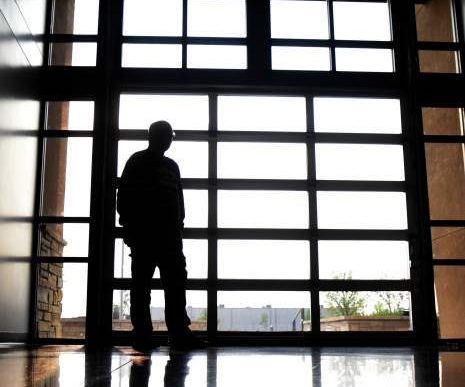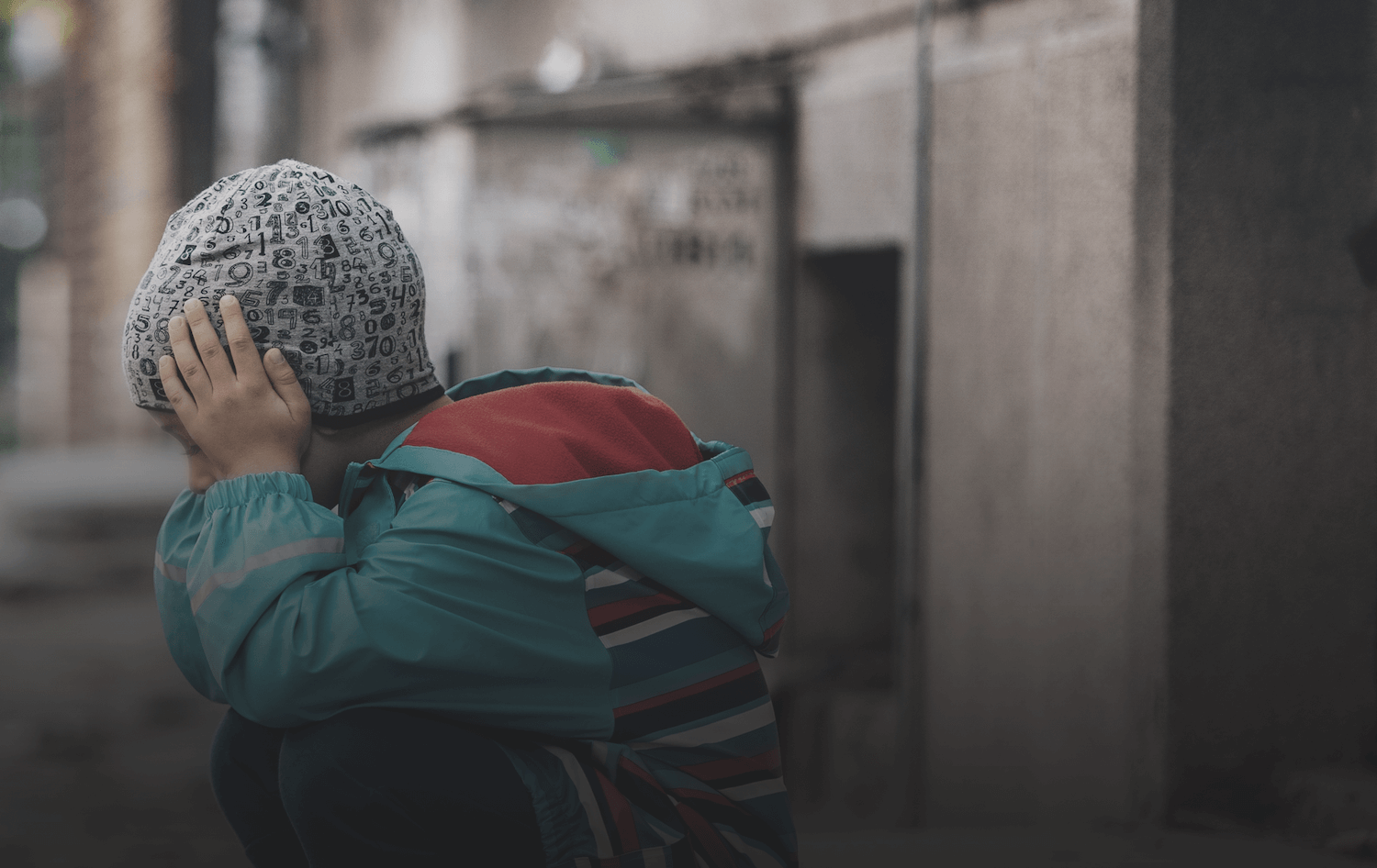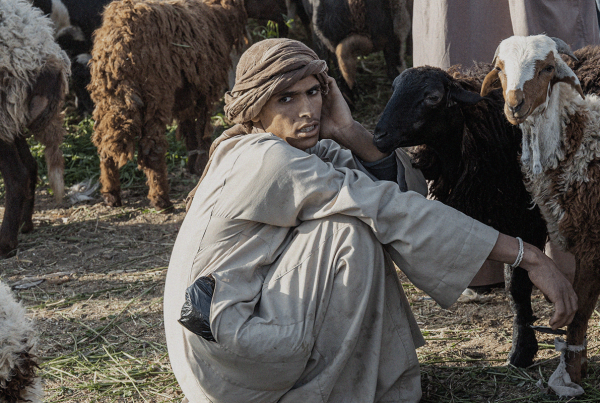When you think of someone being trafficked, who do you picture? Many of us immediately think of girls— but that’s not the whole picture. The number of boys who have been identified as human trafficking survivors grew by over five times between 2004 and 2020, according to the Trafficking In Persons Report. In fact, the UNODC shared that in the big picture of known human trafficking cases, the number of underage boys is almost the same as underage girls (17% versus 18% of the global total of cases).
But Sean Wheeler doesn’t need the official data to know that.
A survivor of child sex trafficking who has now spent years sharing his story and serving other male survivors through Starfish Ministries Colorado, Sean has both lived experience and extensive professional expertise. He wants the world to know: boys are trafficked too. And dispelling the misinformation and stigma that keeps many men and boys silent is part of getting them the support that they deserve.
Sean’s story: exploited as a young child
For Sean, the grooming began when he was only 4 years old. At age 5, Sean was lured into a shed by a young man who had been grooming him. Other men were already waiting to sexually abuse him after that. That was the first time Sean was trafficked.
“He told me, ‘don’t ever say anything because I’ll kill your dog. Your family won’t want you.’ All these things that would frighten a 5-year-old,” Sean recalls.

Sean Wheeler, left, at 4 years old, and, right, in the 4th grade
This is a common tactic traffickers use, shaming and silencing those they exploit, targeting their fears and their desire to be loved. The threats worked on Sean’s vulnerable heart. He didn’t dare tell his parents.
“If kids have a good relationship with their parents, they can say anything. I didn’t,” Sean says frankly. “I had relatives who told me I was not a planned birth. I had relatives say, ‘you almost killed your mother when you were born.’ No kid needs to be told that. And the person who ran the [trafficking] network knew my parents, knew the family dynamics, and took advantage of that. I didn’t feel safe. When they told me ‘your family won’t want you,’ it worked on a 5-year-old.”
Sean adds, “I still remember thinking ‘man, I’m somehow not good anymore.’”
Looking back on it now, Sean knows that psychological conditioning is common for traffickers, who are looking for insecurities in kids to exploit. As a child desperate for love and anxious to please, Sean’s story is one echoed by so many survivors: “I came from a very dysfunctional family at that time, so I fit the pattern of a kid who was vulnerable to that.”
The exploitation escalated, with the trafficker bringing him into a revolving network of clients. Many of them were men, but Sean estimates that around a third of them were women. At the age of 7, he was also exploited through the creation of child sexual abuse material. Sean’s spirit broke under the weight of repeated horror.
“I got used to it, because the other thing they taught me was ‘this is the only thing you’re good at, it’s what you’re made for,’” Sean remembers.
The pattern of abuse halted for a while when the family moved to another state, removing Sean from the network of traffickers. But he found himself falling into dangerous situations, pursuing promiscuity and alcohol, wildly acting from the deep trauma he’d experienced and buried.
Sean says, “I was locked in a pattern of people approaching me, thinking ‘you just have to let them do it.’ That’s true of a lot of abuse survivors.”
“By the time I became a teenager, I knew ‘well this is fake love, but fake is better than nothing,’” Sean adds.
That mindset is why so many survivors of abuse and exploitation return to places of harm. It’s all they know, and it can feel like the only kind of stability or safety they’ll ever have access to.
The last time Sean was assaulted was during his first military posting as a 19-year-old — and the abuse came at the hands of his boss. It was then that Sean decided to fight for a different way of living.
“When I turned 20, I drew my own line in the sand and said ‘no more. No one is going to use me again,’” Sean states. “I’d been told by the time I turned 20, I should just die because I wouldn’t be worth anything anymore. I was so afraid of getting past 19. I thought, ‘someone’s going to find me and kill me,’ as I’d been threatened. Or I was going to end it myself. Once I made it past that, I was like, OK. I’m still here.”
Boys are trafficked everywhere
Sean quickly learned that his own story was tragically common. When he was working as a military consultant in Afghanistan, he became aware of the global prevalence of boys being trafficked for sex. As a military contractor in Afghanistan in 2011, he witnessed firsthand the culture around the “dancing boys,” a cultural institution that protects sexual exploitation.
“The Afghans, culturally, don’t talk about boys and abuse. They won’t go there,” Sean says.
That silence seems to be the norm in many places around the world. Even with the urgency of constantly surfacing stories of exploitation of boys and men, stigmas and stereotypes remain.
“The big lie out there that a lot of people promote is based on statistics that were never accurate: 98% of the victims are female, 99% of the buyers are male. I argue against both of those,” Sean explains. “PACT [formally ECPAT-USA] did a study in 2013 that showed boys are 50% of the victims in the U.S.”
Women can be traffickers too
And the flip side of that is that, despite common misconceptions, women can also be exploitative. In 2020, about 20% of human trafficking cases in the U.S. specifically involved women as perpetrators. In 2018, nearly 40% of traffickers prosecuted globally were women. And that’s only the small percentage of cases that actually made it to court.
Anecdotally, Sean estimates that about 35% of the “johns” that bought time to sexually abuse him were women. Sean says, “[People] don’t want to hear that. They don’t want to hear that women are involved. Police tell me that all the time.”
Sean himself has experienced the bitter consequences of those misconceptions. He’s heard statements like “you were a boy, why didn’t you run away?” and even “if it does happen to boys, serves them right! Now they know what women go through.”
As appalling as those statements are, it has only forged a deep determination in Sean to combat the misinformation.
Coming full circle
For Sean, sharing his story publicly was not the original plan. He would happily have let his past remain a secret. But a counselor at a church had preternatural insight into his history.
“She looked at me and asked when I’d been abused,” Sean recalls. “I asked her how she knew, and she said ‘I can see it in your eye.’”
She invited him to begin therapeutic work with her, to address what he’d avoided for so long. She also suggested he share his story with others. At first, Sean was utterly opposed to the idea. She suggested that he simply pray about it. When Sean did that, he heard what he believes to be a divine voice telling him simply: “come home. I created you, and I didn’t create you to live in this sadness. Take my hand. We’ll do it together.”
That led to Sean walking through the process of trauma counseling, unearthing his deep wounds and working towards healing. His counselor began encouraging Sean to transform his past, sharing that she could see him writing a book and speaking in the future. His courageous healing became transformative. He wrote a book. He began writing pieces that were published on platforms like Fight The New Drug. And he began speaking. In total, around 6 million people have now heard Sean’s story.
As Sean reflects on all of the stories he’s heard from others along the way, he says, “I’ve learned that the reality is that there is no such thing as normal. Everyone has challenges. There are very few people in the world who grow up without any kind of issue at all. That’s why I do what I do. I’ve found my purpose.”

Today, Sean is an advocate for trafficking survivors and even visits prisons to share his experience with sex crime offenders in order to prevent reoffending.
Part of that purpose includes something that most would consider unheard of: he intentionally visits jails to speak to groups of sex offenders. He shares his story. He hears theirs in return. And he learns about the cycles of sexual abuse that often underlie those kinds of crimes.
In addition to the redemptive significance of those one-on-one connections, Sean is also actively combating future crime with the power of his story.
“I’ve had people from several law enforcement agencies tell me, ‘when someone like you comes and speaks to people like this, the reoffending rate falls by 90%,’” Sean says.
For this survivor leader, the call into prisons is ultimately one born of his faith. He explains, “I don’t offer forgiveness and hope as a way to excuse them from anything. It opens a door in the spiritual world where they can then seek a true relationship with God and seek a change in their own life.”
Protecting kids from trafficking
As Sean’s story went public, he experienced the shock that survivors often encounter from people in their lives who had no idea. But he also had a few people who admitted they knew something was wrong.
“When I first told my aunt, she said ‘oh, that explains a lot,’” Sean remembers. “She said, ‘You went from a sweet little boy to an angry, distant little boy.’”
That major personality shift is something that Sean identifies as a big warning sign that a child might be abused. He says, “I got in trouble a lot at school in 2nd and 3rd grade. I wish my teachers had noticed. I had one teacher in kindergarten through 4th grade, and I think she had suspicions about what was going on. I could go to her house and do homework at her table. I was safe there.”
When it comes to preventing that kind of exploitation, Sean has learned that the best protective factor is one he never had: a stable family.
“I believe it starts at home. The best thing you can do is make sure your child understands that they can come and tell you anything,” he says.
Currently, in addition to his speaking through Starfish Ministries Colorado, Sean often operates as a hub to refer male survivors to counseling services and the few aftercare nonprofits that serve them. He writes. He’s working on a potential film with a writer and producer in Hollywood. And he’s continually finding new ways to engage in the global anti-trafficking community, reminding them: don’t forget about the boys.
You can follow Sean Wheeler’s work on Facebook and YouTube.
Signs of trafficking
In addition to the signs Sean shared, you can identify that someone might be trafficked if they:
- Seem distrustful of authorities
- Are shadowed by someone who seems to be speaking for them and controlling their behavior
- Have no passport or ID
- Have limited personal belongings
- Are wearing dirty, worn, or over-sexualized clothing
- Are unable or unwilling to answer questions about their living situation or employment
- Seem fearful or detached
- Avoid eye contact
- Appear malnourished or injured
- Have tattoos or branding
You can combat trafficking by being a safe place for youth to discuss what’s happening in their lives. If you suspect that a boy in your life is being trafficked, contact the National Human Trafficking Hotline, or use their referral directory to find services in your area. If you are a survivor of childhood exploitation yourself, Sean suggests reaching out to the Wings Foundation for support as you begin healing. Visit our Do You Need Help page for more resources.







